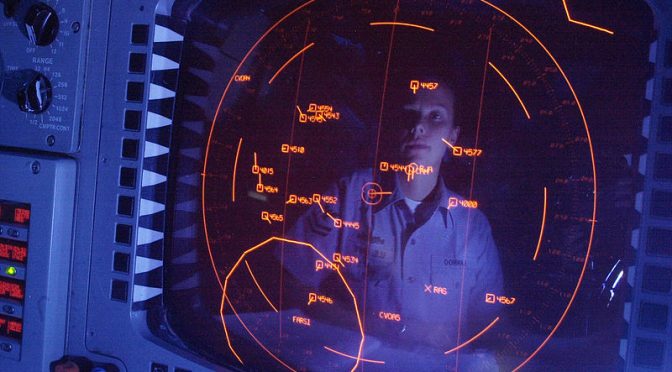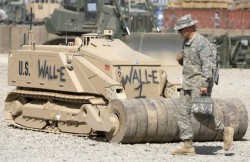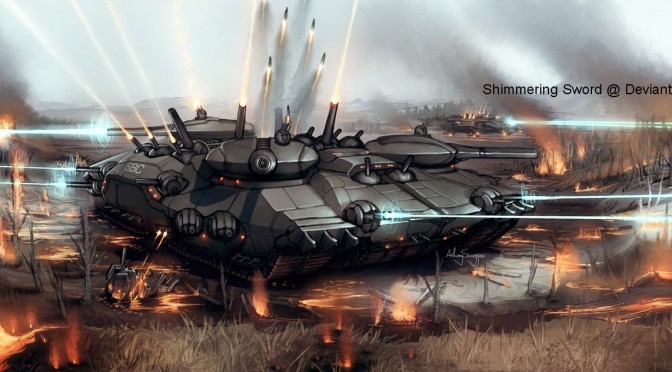By Andrew P. Thompson
The Modern Fight
Written into the most recent National Security Strategy is the principle that Great Power competition will continue to play a major role in the shaping of our strategic priorities.1 As the Navy continues adapting to operations below the level of armed conflict, how we implement combat capability must adjust. China’s modernization of its Navy, enhanced with its desired use of Artificial Intelligence (AI), should catalyze change in our own development efforts. Its modernization initiative directly supports its system destruction warfare principle, which operationalizes a system of systems approach to combat. Confronting this style of warfare requires a new mindset, and the Information Warfare apparatus, of which Naval Intelligence is an integral part, must align itself appropriately to support this change. While the last century’s wars heavily favored attrition-centric warfare, 21st century Great Power competition requires the use of warfare that is decision-centric. The Information Warfare Community (IWC) support required for such an approach must capitalize on the use of new technologies, developed from industry, to aid commanders. Doing so will allow the IWC to provide decision-makers with the best advantages as fast as possible and the method to accomplish such a feat will determine both the IWC’s and Naval Intelligence’s legacy in this modern fight.
By the end of 2020, China is assessed to have 360 battle force ready ships compared to the U.S. Navy with 297.2 Projecting forward to 2025, China will have 400 battle force ships and 425 by 2030.3 In addition to the sheer size of its projected ship count, China is currently making strides to modernize its programs associated with anti-ship ballistic missiles, anti-ship cruise missiles, submarines, aircraft, unmanned aircraft, and command and control, communications, computers, intelligence, surveillance, and reconnaissance (C4ISR) tools.4 One supporting element in modernizing these programs is the Chinese utilization of AI. According to the Congressional Research Service, “the Chinese aim to use AI for exploiting large troves of intelligence, generating a common operating picture, and accelerating battlefield decision-making.”5 As opposed to the bureaucratic red tape that exists in much of the U.S. defense acquisitions process, few such barriers exist in China’s between its commercial, academic, military, and government entities. Therefore, the Chinese government can directly shape AI development to meet its desired need in whatever capacity it wants. To support this effort, the Chinese government founded a Military-Civil Fusion Development Commission in 2017 in order to rapidly transfer AI technology, from whatever source, directly to the military.6 In doing so, China is incrementally utilizing AI to enhance its conventional force modernization programs at a more rapid pace than one impeded by self-imposed bureaucracy.
AI Benefits/Issues
The advantages of AI technology apply no matter which nation develops it, allowing combat systems to react at gigahertz speed. With such a dramatic shift in the time scale of combat, the pace of combat itself accelerates.7 Additionally, military AI use can provide an augmentation option for long-term tasks that exceed human endurance. For example, intelligence gathering across vast areas for long durations becomes more manageable for human analysts when using AI.
In addition to the above advantages, AI directly confronts, and has the potential to make sense of, the tremendous amount of data for analysts to process. While the U.S. military operates over 11,000 drones, with each one recording “more than three NFL seasons worth” of high-definition footage each day, there are simply not enough people to adequately glean all possible actionable intelligence from such media.8 Similarly overwhelming are the 1.7 megabytes of information that the average human generates every second.9 Therefore, AI-powered intelligence systems may offer a way to sift through the resulting data repositories in order to better understand behavior patterns. Further, after a desired set of iterations, AI algorithms may feed further analysis that refines earlier conclusions, and ultimately provide an even better understanding of complex information for decision-making advantage.10 While promising, skepticism is necessary. Dr. Arati Prabhakar, a former DARPA Director, noted, “When we look at what’s happening with AI, we see something that is very powerful, but we also see a technology that is still quite fundamentally limited…the problem is that when it’s wrong, it’s wrong in ways that no human would ever be wrong.”11 Such skeptical risk, however, does not outweigh the possible benefits of AI’s development and use.
While the advantages of AI technology are clear, our adversary’s approach to how this development takes place merits discussion. The Chinese AI development framework can be corrupt and favor sub-par research institutions, resulting in potential overinvestment, producing unneeded and wasteful surpluses.12 Conversely, whatever advantage the U.S. retains in AI technology research due to China’s own domestic malfeasance can quickly diminish by way of industrial espionage. Despite agreeing to the U.S.-China Cyber Agreement, in which both sides agreed that “neither country’s government will conduct or knowingly support cyber-enabled theft of intellectual property,” it was reported to Congress that “from 2011-2018, more than 90 percent of the Justice Department’s cases alleging economic espionage by or to benefit a state involve China, and more than two-thirds of the Department’s theft of trade secrets cases have had a nexus to China.”13 Such actions, while not germane exclusively to AI development, clearly show an aggressive approach to technological progress with little regard for agreed-upon rules. When applied to AI research, such aggressiveness may result in less safe outcomes due to China’s tolerance for risk at the expense of speed. This may eventually result in the U.S. possessing more capable applications in the long-term.14 However, such optimism does not exempt the U.S. from adjusting to the modern concept of warfare for which China is rapidly developing AI in the first place.
System of Systems/System Destruction Warfare
The People’s Liberation Army (PLA) no longer sees war as a contest of annihilation between opposing forces. Rather, it sees war as a clash between opposing operational systems.15 Thus, China sees the victor in a war as the side who renders the other side’s systems ineffective, the ultimate goal of system destruction warfare. This model demands a joint force that utilizes numerous types of units from multiple services to continuously conduct operations across the battlefield.16 The past predicated that dominance in one or more physical domains was sufficient for warfighting success. As an example, 20th century thought suggested that air dominance was necessary to achieve land or sea dominance. Systems confrontation, on the other hand, predicates that warfare success requires dominance in all domains: land, sea, air, cyber, electromagnetic, and space.17 However, for such dominance to occur, the first domain necessitating control is the information one, as it is the nucleus that ensures everything else within the overall system correctly functions.18
To account for this dynamic force posturing in all domains, the PLA requires multidimensional and multifunctional operational systems. Such system permutations enable enough flexibility to adjust to newly developed technology.19 Correspondingly, a degree of malleability is built into the architecture of the PLA’s system categories of entities, structures, and elements. Entities include the weapon platform itself. Structures include the matrix style interlink that allows for coordinated functioning. Elements include the system’s command and control, protection, and maneuver capabilities. When intertwined, the resulting web of each system’s entities, structures, and elements provides redundancies that ensure the overall system is greater than the sum of its disparate parts.20 That said, each part is elastic enough that taking one part away from the web will not result in a total loss, while adding a part is equally non-destructive.
With these systems, the PLA seeks to strike four types of targets: 1) targets that interrupt the flow of information within an enemy’s system, such as key data links to a system’s command and control, 2) targets that degrade essential elements of an enemy’s system, such as a system’s firepower capability, 3) targets that interrupt the operational architecture of a system, such as the physical nodes of the essential elements (i.e. the firepower network), and 4) targets that interrupt the tempo of an enemy’s systems architecture, such as a system’s “reconnaissance-control-attack-evaluation” process that is inherent to all operational systems.21 Thus, the PLA seeks to operationalize its destructive warfare model by targeting what it perceives as the most vulnerable parts of its adversary’s infrastructure. By building flexibility into the design of units within its own system of systems (entities, structure, and elements) used to conduct this targeting, China’s system destruction warfare model accounts for loss while simultaneously adapting to new developments. Such an approach makes for a leaner, smarter, and dynamic force.
Decision-Centric Warfare/Our Response
In the current environment, Carrier Strike Groups are the Navy’s common force packages that deliver multi-mission units.22 These groups are vulnerable due to their size and aggregation, providing the perfect units for the PLA to target with its system destruction warfare model. Other services’ main force packages, such as the Army’s Brigade Combat Teams and the Marines’ Expeditionary Units, are also reflective of a vulnerable force borne out of the attrition-centric warfare model.23 While this legacy mindset worked in the 20th century, Great Power competition in the 21st century provides the requisite scenario to impose multiple dilemmas on an enemy to prevent it from achieving objectives. This decision-centric warfare approach, where making decisions faster than the adversary is paramount, is the cornerstone ingredient of the required methodology to confront China’s destructive warfare model.24 Having the Navy’s current force package, the Carrier Strike Group, utilize AI and autonomous systems is the means by which this new approach can be operationalized.
In addition to the benefits of AI discussed earlier, autonomous systems afford forces the ability to conduct more distributed operations by way of disaggregating capabilities of more traditional multi-mission platforms into a larger number of less flexible and less expensive systems.25 Use of these autonomous systems, on an as-available basis, is the hallmark standard of the decision-centric model. Thus, command and control of autonomous forces is based on communications availability, rather than a hardened command and control network. Decision-centric warfare assumes, and accounts for, contested and/or denied communications, as a commander will only possess control of forces that he/she actually can communicate with.26
From a decision-centric warfare model perspective, the current force’s Mission Command actually undermines its ability to make the necessary quickest decisions. It does so because the current command and control of forces is dependent on working communications, or extensively troubleshooting them, all of the time. To enable commanders to address this shortfall, the adoption of a new command and control structure that combines human command and AI-enabled machine control is necessary. Such a structure would combine a human’s flexibility and creativity with a machine’s speed and scale.27 Over time, as discussed earlier, human commanders could adjust machine recommendations, thereby forcing the machine to learn, increasing the commander’s confidence in subsequent recommendations when communications are limited.28 The net result of this feedback loop is a decision-making apparatus superior to an adversary’s. When applied to enemy systems attempting to target/destroy friendly force systems, the resulting quick decision-making effectively outmaneuvers the opposing side.
A key enabler of this quick decision-making rests with the advent of the Information Warfare Commander position on Carrier Strike Group staffs, which has gradually elevated the status of the Information Warfare Community (IWC) across the service. Along with this position, personnel within the Strike Group IWC Enterprise are key enablers who must recognize that their ability to leverage decision-making and combat capability lies with their ability to enable AI and autonomous systems of the future, combine this enabling with their own understanding of enemy intentions, and ultimately make recommendations to improve the commander’s decision cycle.
To achieve this, IWC personnel must be cognizant of new technologies on the rise within industry, where the most promising disruptive innovation trends reside that can meet these challenges. As the National Security Strategy states, “We must harness innovative technologies that are being developed outside of the traditional defense industrial base.”29 To this end, and to “harness innovative technologies,” an AI-industry sponsor must be assigned to each Carrier Strike Group Information Warfare Commander and his/her subordinate staff. This sponsorship program would enable IWC personnel the ability to incorporate the most modern AI technology into at-risk portions of their portfolios and define exacting requirements for new tools that are flexible enough for future progressive technological investment. While such innovation developments may surpass the tenure of the personnel assigned to the Strike Group staffs, the output of each team will aid future teams’ performance and eventually the Navy’s fighting ability. As such, after several iterations of afloat Strike Group staffs working with their respective industry sponsor, the result would be the promotion of tool production that aids the service in possessing the technological and decision-making edge…and ultimately play a direct role in future potential conflicts.
Getting to this point will require a new mindset for IWC personnel. Most do not possess acquisitions experience and most have not worked in positions that require technological innovation. To aid in not overburdening an IWC staff, the TYCOM should assign an Acquisitions Community sponsor to each Information Warfare Commander. This new combined team, comprised of the Strike Group IWC personnel, the AI-industry sponsor, and the TYCOM-approved Acquisitions Community sponsor, would seek to prototype tools/designs that attack key problem areas encountered by end users (i.e. the IWC personnel), as stated earlier. By swiftly deploying new operational concepts into potentially useable tools and products, the new decision-making infrastructure would support a warfare model fit to confront China’s today.
When compared to every other warfare area within the Navy, the IWC requires the most modern technological advances in the least amount of time. While other communities have proven processes and protocols in place to implement new technologies into their existing platforms, the IWC is simply too new and in too much need to benefit from these practices. This demands that the IWC business model be different, as Information Warfare Commanders need tools right now to effectively compete and win. Further, they must be the right tools where end users have a direct say in what they get.
Great Power Competition will dominate our military’s focus for the foreseeable future and the Information Warfare Community, including Naval Intelligence, must adjust accordingly. Understanding that China intends to enhance its military modernization efforts with AI, that it thinks differently about warfare in the 21st century, and that we need to modify our own warfare model to effectively respond, the Information Warfare Community’s newfound status should elevate new technologies into our Navy’s decision-making and combat DNA. The nation, and our Navy, cannot afford a misstep in this realm. The next major conflict will possess high stakes in the information domain where the Navy’s IWC will be at the forefront.
LCDR Andrew Thompson is currently serving at the USINDOPACOM JIOC. As a Surface Warfare Officer, he served aboard USS BOONE (FFG 28) as the Communications Officer, at Destroyer Squadron FIFTY as the Operations Officer, and at Naval Special Warfare Group ONE as the Middle East Desk Officer. As an Intelligence Officer, he has completed tours at the Office of Naval Intelligence, the Navy Cyber Warfare Development Group, and Carrier Strike Group TWELVE (as the Deputy N2). He holds a B.S. in Naval Architecture (USNA ’05), an M.S. in Mechanical Engineering (NPS), and an M.A. in National Security Studies (Naval War College). He holds subspecialties in African Studies and Space Systems, and has deployed to the SOUTHCOM, EUCOM, AFRICOM, and CENTCOM AORs. The views expressed in this article are his own, and do not reflect those of the Department of Defense or the Intelligence Community.
Endnotes
1 Trump, Donald J., National Security Strategy of the United States of America, December, 2017, 27.
2 “China Naval Modernization: Implications for U.S. Navy Capabilities—Background and Issues for Congress.”
3 Ibid., 2.
4 Ibid., 3.
5 “Artificial Intelligence and National Security,” Congressional Research Service, November 21, 2019, 21.
6 Ibid., 21.
7 Ibid., 27.
8 Ibid., 28.
9 Ibid., 28.
10 Ibid., 28-29.
11 Ibid., 29.
12 Ibid., 23.
13 Ibid., 23.
14 Ibid., 23.
15 Engstrom, Jeffrey, How the Chinese People’s Liberation Army Seeks to Wage Modern Warfare, Santa Monica, CA: RAND Corporation, 2018, 10-11.
16 Ibid., 12.
17 Ibid., 13.
18 Ibid., 12.
19 Ibid., 13.
20 Ibid., 14.
21 Ibid., 16-18.
22 Clark, Bryan, Dan Patt, and Harrison Schramm. Mosaic Warfare: Exploiting Artificial Intelligence and Autonomous Systems to Implement Decision-Centric Operations. Center for Strategic and Budgetary Assessments, 2020, ii.
23 Ibid., iii.
24 Ibid., iii.
25 Ibid., v.
26 Ibid., v.
27 Ibid., vi.
28 Ibid., vi.
29 Trump, Donald J., National Security Strategy of the United States of America, December, 2017, 29.
Bibliography
“Artificial Intelligence and National Security.” Congressional Research Service. November 21, 2019. https://fas.org/sgp/crs/natsec/R45178.pdf
“China Naval Modernization: Implications for U.S. Navy Capabilities—Background and Issues for Congress.” Congressional Research Service. May 21, 2020. https://fas.org/sgp/crs/row/RL33153.pdf
Clark, Bryan, Dan Patt, and Harrison Schramm. Mosaic Warfare: Exploiting Artificial Intelligence and Autonomous Systems to Implement Decision-Centric Operations. Center for Strategic and Budgetary Assessments, 2020. https://csbaonline.org/uploads/documents/Mosaic_Warfare_Web.pdf
Engstrom, Jeffrey. How the Chinese People’s Liberation Army Seeks to Wage Modern Warfare. Santa Monica, CA: RAND Corporation, 2018. https://www.rand.org/pubs/research_reports/RR1708.html
Trump, Donald J. National Security Strategy of the United States of America. December, 2017. https://www.whitehouse.gov/wp-content/uploads/2017/12/NSS-Final-12-18-2017-0905.pdf
Featured Image: Sailors wearing gas masks operate a combat direction system console aboard the guided-missile frigate Handan (Hull 579) during a 4-day maritime training exercise conducted by a destroyer flotilla of the navy under the PLA Northern Theater Command in waters of the Yellow Sea from March 27 to 30, 2018. (eng.chinamil.com.cn/Photo by Zhang Hailong)





